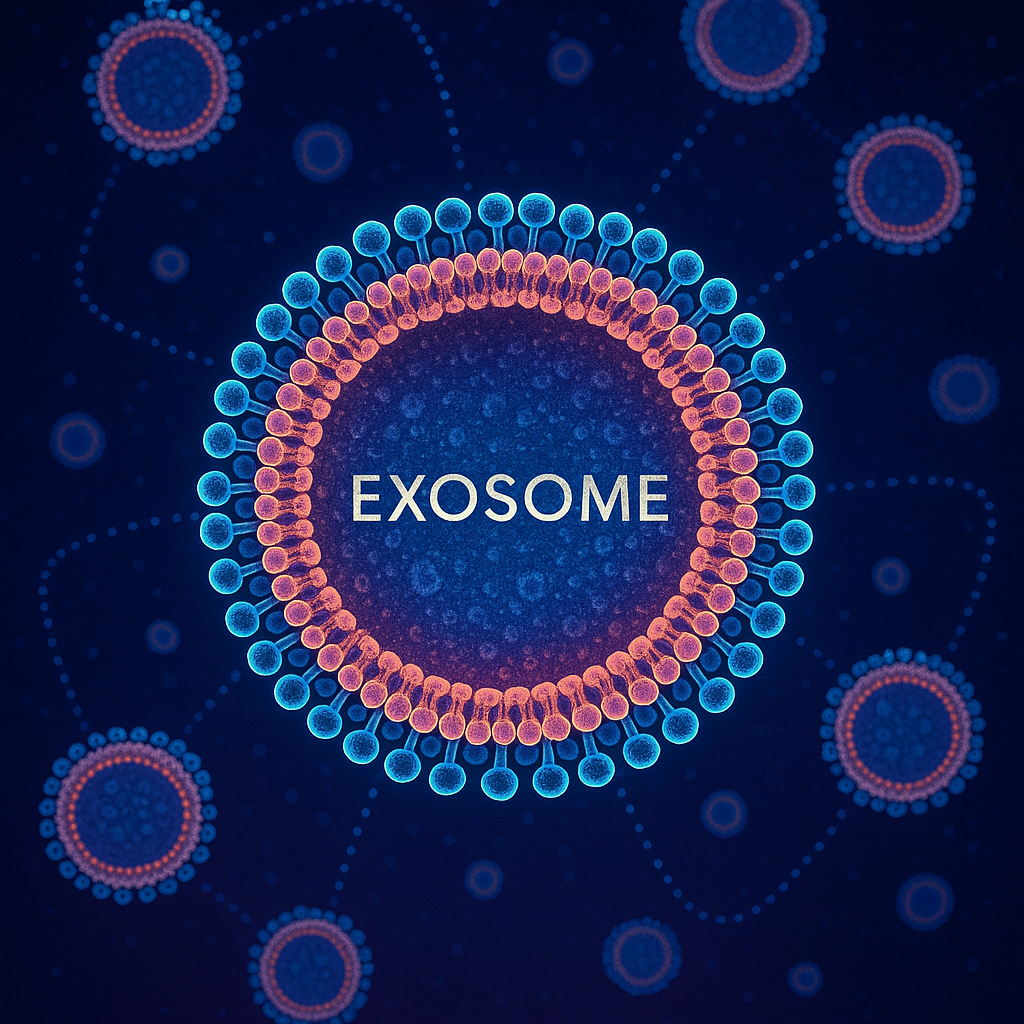The field of aesthetic plastic surgery is continuously evolving, with new techniques and technologies emerging to enhance patient outcomes. One of the most promising advancements in recent years is the use of exosomes, which are tiny extracellular vesicles that play a crucial role in cell communication and regeneration. This article explores how exosomes are transforming skin rejuvenation, their mechanisms of action, and the potential benefits they offer in aesthetic procedures.
Understanding Exosomes
Exosomes are nanosized vesicles that are released by various cell types, including stem cells. They contain a rich cargo of proteins, lipids, and RNA, which facilitate intercellular communication. By transferring these bioactive molecules, exosomes can influence the behavior of recipient cells, promoting regeneration and healing. Their role in cellular communication is akin to that of a postal service, delivering messages that can alter the course of cellular activities, such as inflammation, apoptosis, and differentiation. This makes them not only vital for normal physiological processes but also a focal point in therapeutic strategies for various diseases.
The Biology of Exosomes
Exosomes are formed within the endosomal system of cells and are released into the extracellular space when multivesicular bodies fuse with the plasma membrane. Their small size, typically ranging from 30 to 150 nanometers, allows them to easily penetrate tissues and interact with target cells. This unique ability makes exosomes a powerful tool in regenerative medicine. Moreover, the lipid bilayer of exosomes protects their cargo from degradation, ensuring that the proteins and nucleic acids they carry remain intact and functional upon reaching their destination. This stability is crucial for their potential use in drug delivery systems, where exosomes can be engineered to carry therapeutic agents directly to diseased cells, minimizing side effects and enhancing treatment efficacy.
Sources of Exosomes
While exosomes can be derived from various cell types, those derived from stem cells have garnered significant attention in the field of aesthetic plastic surgery. Stem cell-derived exosomes are rich in growth factors and cytokines, which are essential for tissue repair and regeneration. These exosomes can be harvested from different sources, including adipose tissue, bone marrow, and umbilical cord tissue. Each source offers a unique profile of exosomal content, which can be tailored to specific therapeutic needs. For instance, exosomes from adipose-derived stem cells may promote skin rejuvenation and wound healing, while those from umbilical cord mesenchymal stem cells might be more effective in reducing inflammation and enhancing immune responses. The versatility of exosomes makes them a promising candidate for personalized medicine, where treatments can be customized based on individual patient profiles and conditions.
The Role of Exosomes in Skin Rejuvenation
Skin rejuvenation involves restoring the skin’s youthful appearance by addressing issues such as wrinkles, fine lines, and loss of elasticity. Traditional methods, including chemical peels, laser treatments, and fillers, have been widely used, but the introduction of exosomes offers a novel approach that complements these techniques. Exosomes, which are small extracellular vesicles secreted by various cell types, play a crucial role in cell communication and have emerged as powerful agents in regenerative medicine, particularly for skin health.
Mechanisms of Action
Exosomes exert their effects through several mechanisms. They promote angiogenesis, which enhances blood flow to the skin, thereby improving nutrient delivery and waste removal. Additionally, exosomes stimulate fibroblast activity, leading to increased collagen and elastin production. This results in improved skin texture and elasticity. Furthermore, exosomes are rich in growth factors, proteins, and genetic material that can influence cellular behavior, encouraging the repair and regeneration of damaged tissues. This multifaceted approach not only addresses existing skin concerns but also helps prevent future damage, making exosomes a compelling option for long-term skin health.
Anti-Inflammatory Properties
Chronic inflammation is a significant contributor to skin aging. Exosomes possess anti-inflammatory properties that help mitigate this process. By modulating the immune response, exosomes can reduce inflammation in the skin, promoting a healthier and more youthful appearance. This is particularly beneficial for individuals suffering from skin conditions such as acne, rosacea, or eczema, where inflammation plays a central role. Moreover, the anti-inflammatory effects of exosomes can enhance the overall skin barrier function, making the skin more resilient to environmental stressors, such as pollution and UV radiation, which are known to accelerate aging.
In addition to their direct effects on inflammation, exosomes can also facilitate the repair of the skin barrier by promoting the proliferation of keratinocytes, the primary cells found in the epidermis. This not only aids in healing but also helps to maintain optimal hydration levels, further contributing to a plump and youthful appearance. The synergy between exosome therapy and traditional rejuvenation techniques can lead to enhanced outcomes, as exosomes prepare the skin for more effective treatment responses, ensuring that the benefits of procedures like microneedling or laser therapy are maximized.
Applications of Exosomes in Aesthetic Procedures
The versatility of exosomes allows for their application in various aesthetic procedures. From enhancing the effects of traditional treatments to being used as standalone therapies, exosomes are proving to be a game-changer in the realm of skin rejuvenation. Their ability to facilitate communication between cells and promote healing makes them a valuable asset in modern aesthetic medicine.
Combination with Microneedling
Microneedling is a popular treatment that involves creating micro-injuries in the skin to stimulate healing and collagen production. When combined with exosome therapy, the results can be significantly enhanced. The exosomes promote faster healing and improve the overall quality of the skin, leading to more pronounced results. This synergy not only accelerates the recovery process but also amplifies the skin’s natural regenerative capabilities, allowing for a more youthful appearance with minimal downtime. Additionally, the incorporation of exosomes can help to reduce inflammation and redness commonly associated with microneedling, making the treatment more comfortable for patients.
Facial Rejuvenation and Exosome Injections
Exosome injections can be directly administered into the skin to rejuvenate the facial area. This method allows for targeted delivery of growth factors and other bioactive molecules, promoting cellular repair and regeneration. Patients often report improved skin tone, texture, and overall radiance following treatment. Furthermore, the use of exosomes in facial rejuvenation can stimulate the production of elastin and collagen, essential proteins that contribute to skin elasticity and firmness. As a result, individuals may notice a reduction in fine lines and wrinkles, leading to a more youthful and vibrant appearance. The procedure is minimally invasive, making it an attractive option for those seeking effective results without the need for extensive surgical interventions.
Clinical Evidence Supporting Exosome Therapy
As the use of exosomes in aesthetic plastic surgery grows, so does the body of clinical evidence supporting their efficacy. Numerous studies have demonstrated the positive effects of exosome therapy on skin rejuvenation, showcasing improvements in skin elasticity, hydration, and overall appearance. Exosomes, which are nano-sized extracellular vesicles secreted by cells, play a crucial role in intercellular communication and have been shown to facilitate tissue repair and regeneration. This makes them particularly appealing for use in aesthetic procedures, where enhancing the skin’s natural healing processes can lead to more effective and lasting results.
Research Findings
Recent clinical trials have highlighted the potential of exosome therapy in various aesthetic applications. In one study, patients who received exosome injections showed a significant reduction in fine lines and wrinkles compared to those who did not receive the treatment. Another study indicated that exosome therapy improved skin hydration levels, contributing to a more youthful appearance. Additionally, researchers have noted that exosomes can stimulate collagen production, which is vital for maintaining skin structure and firmness. This multifaceted approach not only addresses existing skin concerns but also promotes a healthier skin environment, paving the way for enhanced aesthetic outcomes.
Long-Term Benefits
While the immediate effects of exosome therapy are promising, researchers are also investigating the long-term benefits. Preliminary findings suggest that the regenerative effects of exosomes may lead to sustained improvements in skin quality, reducing the need for frequent treatments. Furthermore, ongoing studies are exploring the potential of exosomes to combat age-related skin changes, such as loss of volume and sagging, by promoting the natural production of hyaluronic acid and other vital components of the dermal matrix. As more data emerges, it is becoming increasingly clear that exosome therapy could represent a paradigm shift in aesthetic medicine, offering patients not only immediate enhancements but also enduring benefits that contribute to a more youthful and vibrant appearance over time.
Safety and Considerations
As with any medical treatment, safety is a paramount concern. Exosome therapy has been shown to have a favorable safety profile, with minimal side effects reported. However, it is essential for patients to consult with qualified professionals to ensure that they are suitable candidates for the treatment. Understanding the underlying mechanisms of exosome therapy can also help patients make informed decisions. Exosomes, which are nano-sized vesicles secreted by cells, play a critical role in cell communication and have been studied for their potential in regenerative medicine, making them a promising option for various conditions.
Potential Side Effects
While exosome therapy is generally well-tolerated, some patients may experience mild side effects, such as redness, swelling, or bruising at the injection site. These effects are typically temporary and resolve within a few days. It is crucial for patients to discuss any concerns with their healthcare provider prior to treatment. In rare cases, patients may report more significant reactions, such as allergic responses or infections, underscoring the importance of post-treatment monitoring. Patients are encouraged to keep an open line of communication with their healthcare team to address any unusual symptoms that may arise.
Choosing a Qualified Practitioner
To ensure optimal results and safety, patients should seek treatment from qualified practitioners who have experience in exosome therapy. It is advisable to inquire about the source of exosomes, the techniques used, and the practitioner’s credentials before proceeding with treatment. Additionally, patients should consider looking for practitioners who are involved in ongoing research or clinical trials, as this involvement often indicates a commitment to staying updated on the latest advancements in the field. Reading patient testimonials and reviews can also provide valuable insights into the practitioner’s expertise and the overall patient experience, helping individuals make a more informed choice.
The Future of Exosomes in Aesthetic Plastic Surgery
The integration of exosomes into aesthetic plastic surgery represents a significant advancement in skin rejuvenation techniques. As research continues to unfold, the potential applications of exosomes are likely to expand, offering exciting possibilities for patients seeking to enhance their appearance.
Innovations on the Horizon
Future innovations may include the development of exosome-based products that can be applied topically or incorporated into other aesthetic procedures. Additionally, ongoing research may uncover new sources of exosomes and methods for enhancing their efficacy, further broadening their use in aesthetic medicine. For instance, scientists are exploring the use of exosomes derived from stem cells, which have shown promise in promoting tissue repair and regeneration. This could lead to groundbreaking treatments that not only improve skin texture and tone but also stimulate collagen production and accelerate healing after surgical procedures.
Personalized Treatments
As the understanding of exosomes deepens, personalized treatment approaches may become more prevalent. Tailoring exosome therapy to individual patient needs and skin types could lead to even more effective outcomes, enhancing the overall patient experience in aesthetic plastic surgery. Furthermore, advancements in genetic profiling and biomarker identification may allow practitioners to customize exosome formulations based on a patient’s unique biological makeup. This level of personalization could optimize treatment efficacy, reduce the risk of adverse reactions, and ultimately lead to higher patient satisfaction. Additionally, the integration of artificial intelligence in analyzing patient data could streamline the process of developing these bespoke treatments, ensuring that each patient receives the most appropriate and effective care tailored to their specific aesthetic goals.
Conclusion
Exosomes are revolutionizing the landscape of aesthetic plastic surgery, offering a novel approach to skin rejuvenation that is backed by scientific research and clinical evidence. Their ability to promote healing, reduce inflammation, and enhance cellular regeneration positions them as a valuable tool in the quest for youthful, radiant skin. As the field continues to evolve, exosome therapy is poised to become a cornerstone of aesthetic treatments, providing patients with safe and effective options for achieving their desired results.
In summary, the integration of exosomes into aesthetic plastic surgery not only enhances existing procedures but also opens the door to new possibilities in skin rejuvenation. With ongoing research and innovation, the future of exosomes in this field looks promising, making it an exciting time for both practitioners and patients alike.




Recent Comments